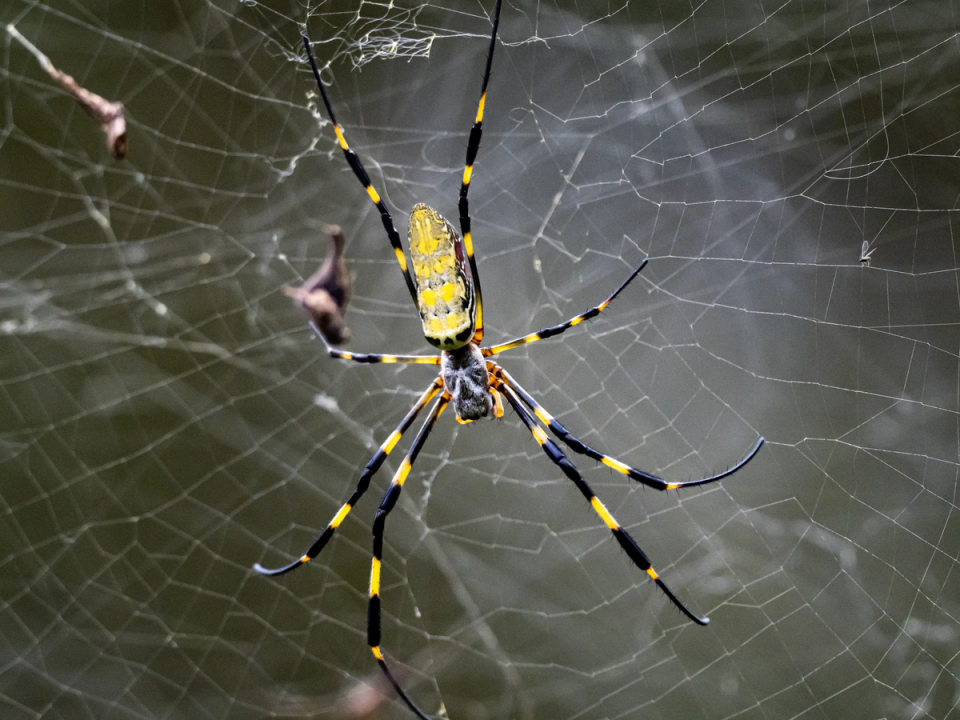Giant floating venomous spiders could invade northeast this summer

They are large. They are venomous. They can float. Say hello to the giant Joro spiders set to invite the Northeast.
This summer, the Joro spiders are expected to continue their expansion across the eastern portion of the US, using their webbing to create little parachutes that allow them to essentially glide on wind currents.
The spiders can grow up to 3 inches and are the size of a person’s palm and have distinctive yellow and bright blue markings. They were first spotted in the US around 2013 in Georgia, and have since been spreading across the east coast.
This year, scientists predict tfor he goliath arachnids will reach as far as Delaware and New Jersey.

Not only do they use their webs to float using a process called "ballooning," but the spiders have also adopted a more human means of travel by latching onto cars and trucks.
José R. Ramírez-Garofalo, an ecologist in the Lockwood Lab at Rutgers University, spoke to SILive.com in April and said the spiders will begin to reproduce in the summer, and the babies will begin to travel in the late summer and fall.
The spiders are native to Japan and are believed to have traveled to the US as stowaways on cargo ships. Entomologists believe the spiders will be able to survive the cold temperatures of east coast winters thanks to their fast metabolisms. Since they can survive the cold, they will likely become a permanent fixture in North America.
Joro spiders weave thick, golden webs that are proportional to their size; that means the webs are large. They tend to prefer the woods, so humans in densely populated areas aren't likely to run into them, but those living in rural settings or who enjoy hiking may spot them.

Some individuals who live near the woods have woken up to find Joros using their homes as an anchor for their massive webs. One Reddit user from Georgia shared an image of multiple Joro spiders latched onto the front of their home, and said approximately 20 arachnids had taken up residence.
Despite their namesake - the mythical Japanese Jorōgumo, a spider that can turn itself into a beautiful woman to feast on unsuspecting men - the spiders don't pose any real threat to humans.
While the Joro spiders are venomous, their fangs are too small to break human skin. They primarily eat mosquitoes, crop-destroying brown stink bugs, and other small insects.
Unlike the spotted lantern fly, an invasive species that can destroy trees at an alarming rate, there is no guidance to kill the Joros. While scientists are still learning about the spiders and examining their impacts on the ecosystems they inhabit, they don't appear to pose any immediate threat at this time.
If anything, they may be a beneficial addition to the US ecosystem as they tend to eat biting pest insects. Further, Joros may prove a fruitful source of food for birds and other large predators.


